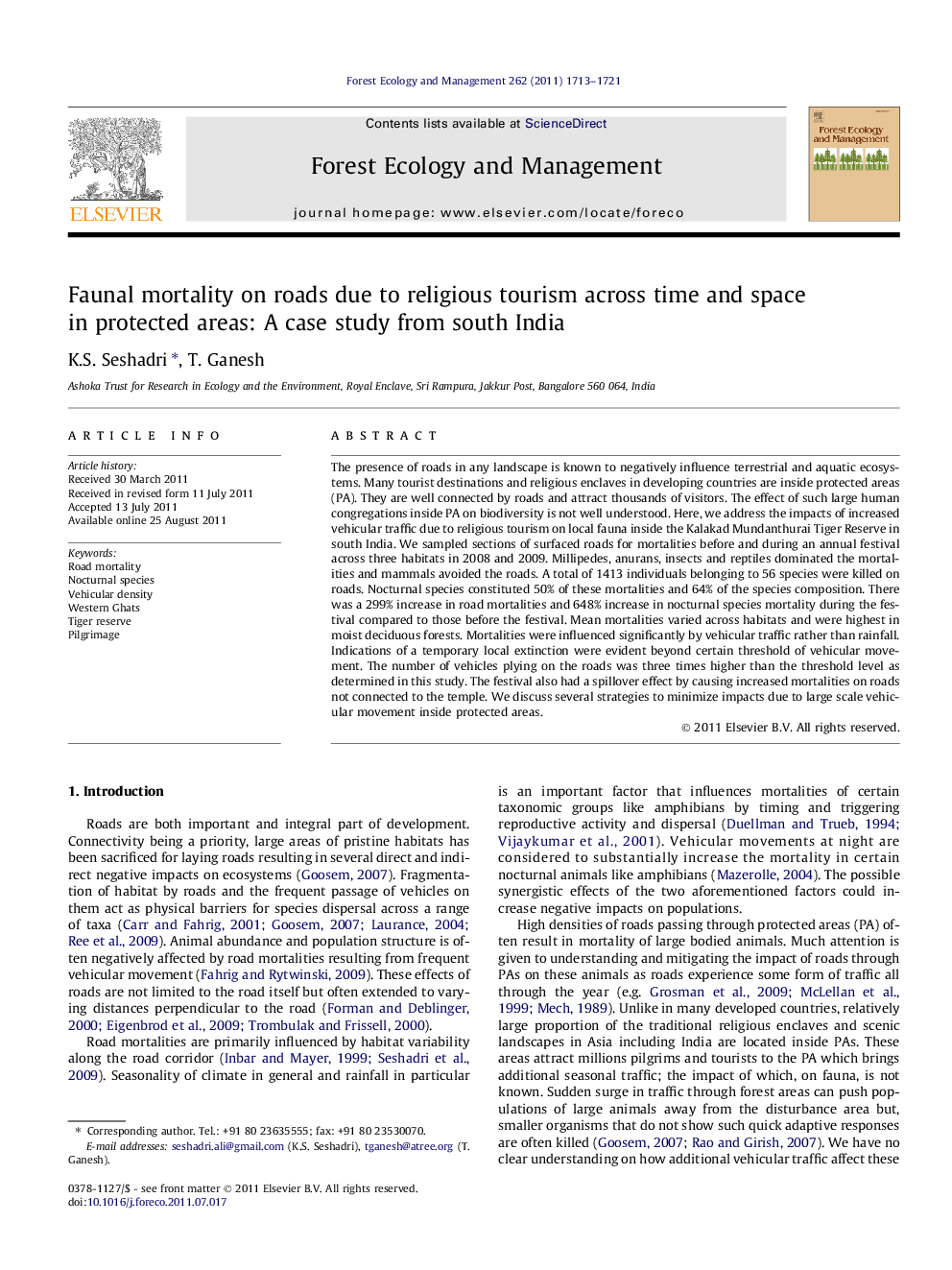ترجمه فارسی عنوان مقاله
مرگ و میر مربوط به جانوران در جاده ها به دلیل توریسم مذهبی در طول زمان و مکان در مناطق حفاظت شده: مطالعه موردی از جنوب هند
عنوان انگلیسی
Faunal mortality on roads due to religious tourism across time and space in protected areas: A case study from south India
| کد مقاله | سال انتشار | تعداد صفحات مقاله انگلیسی |
|---|---|---|
| 75506 | 2011 | 9 صفحه PDF |
منبع

Publisher : Elsevier - Science Direct (الزویر - ساینس دایرکت)
Journal : Forest Ecology and Management, Volume 262, Issue 9, 1 November 2011, Pages 1713–1721
ترجمه کلمات کلیدی
مرگ و میر جاده؛ گونه شبانه؛ چگالی فضایی؛ قسمت های غربی؛ ببر رزرو؛ زیارت
کلمات کلیدی انگلیسی
Road mortality; Nocturnal species; Vehicular density; Western Ghats; Tiger reserve; Pilgrimage

